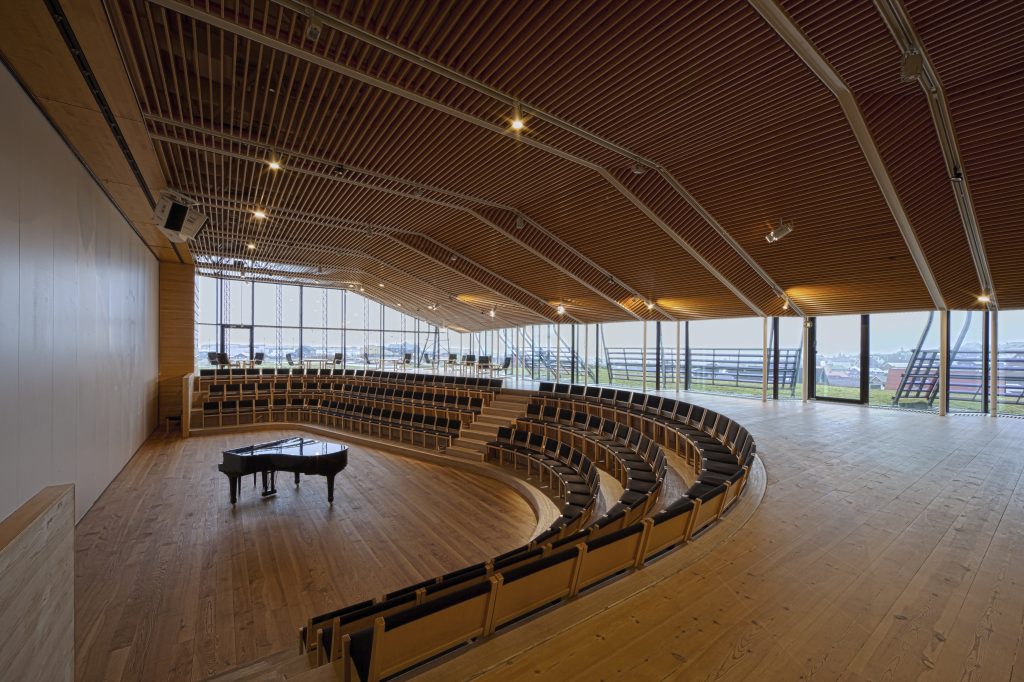In the 1970s, a Faroese member of the Nordic Council proposed building a Nordic cultural centre in the capital of the Faroe Islands. This Nordic House would provide a place for the Faroese to engage with Faroese and Nordic culture and art and partake in cultural activities. The idea was approved by the Nordic Council and in 1977 a design competition was organised. The challenge was to make the large building fit in with the small houses of Tórshavn while at the same time reflecting Nordic design elements on the interior. Furthermore, there was scepticism from the community about the design of the House and how it would function. There was some fear that it would be a place for the elite. These two issues had to be addressed in the design of the building.
Solution

One hundred and fifty-eight architects from the Nordic Region participated in the design contest. The winning proposal came from a Norwegian architect, Ola Steen, and the Icelandic architect Kollbrún Ragnarsdóttir.
The Nordic House was finished in 1983 and incorporates Faroese design elements, such as a grass roof. The majority of the building materials originate from the Faroe Islands. On the inside, the building is furnished with Finnish furniture and equipped with Norwegian stone, Danish steel and glass, Swedish wood and an Icelandic roof construction. Use of light and materials play an important role in ensuring that the design is inviting and comforting to visitors.
Outcome
The Faroese people’s initial scepticism about the Nordic House has been replaced with pride. The practical and flexible design of the building allows the House to accommodate a wide variety of activities, making it a place for people of all ages and backgrounds.

Not only is the House beloved by the Faroese people, it is also an attraction for tourists and a popular conference venue. The House hosts around 400 events and attracts around 120 000 visitors each year. Thanks to the flexible design of the building, more than one event can be held at the same time. Annual activities include the literature festival, the children’s festival and the film festival.
Potentials
The Nordic House is an example of the ways in which equality and inclusiveness are imbedded Nordic design. By creating a welcoming and comforting environment and hosting many different events, the building is approachable for all people. Designing for all layers of society, improving the urban quality and using local materials in the process are typical Nordic qualities that have contributed to the success of the Nordic House. These qualities provide an example that can be implemented in other contexts to improve the public space and make it accessible to everyone.


